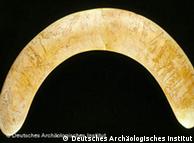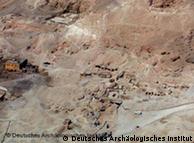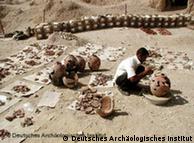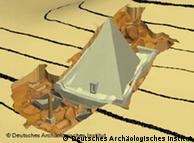Discoveries important archaeological west of Luxor in thecenter of the German of Egyptian antiquities

Give the German Centre for Egyptian antiquities special attention to the arm of the Abu Naga archaeological west of Luxor, and thanks to his efforts is unveiled for new archaeological sites in the region after decades of neglect.
The arm of the Abu Naga archaeological west of Luxor is known to many specialists in the field of archeology and Egyptology. They are located at a distance of 700 km south of Cairo. The name of the region dates back to the village where the existing modern and situated in the northern part of the cemetery to the west and the great period of the capital of ancient Egypt, Thebes. That area had not been long enough attention in the field of archeology. This may be due primarily to the massive destruction inflicted during the looting that have occurred in the nineteenth century, in addition to extensive excavation and then covered by the early twentieth century. This is what makes many people interested in the effects they think they have lost everything from the effects of content, and that there is no point of trying to find new. German Centre for Egyptian antiquities, is trying through the excavations that started there since 1991 to show the true face of the region and leads them out of ignorance into the spotlight and attention.
Important discoveries

Aimed at drilling operations carried out by the German Center for Egyptian antiquities in the area of Abu El Naga under the direction of archaeologist Dr. Daniel Boltz in the first place to see the shape and the evolution of the royal tombs and the graves of individuals of the family since the thirteenth to the early era of the family-eighth session (about 1790-1425 BC).. And including in particular the royal tombs of the family-seventh session, which there is much debate over the form of cemeteries. Despite the discoveries of many of the mission since its inception in the arm of the Abu Naja, such as the discovery of twenty small cemetery on the north side of the area and that return to the era of the modern state, in addition to the discovery of another large cemetery is located on the south side of the region, these findings did not reach To the primary objective of the archaeological mission, namely, the tombs of the family-seventh session. But the tide has completely changed after the mission began prospecting in the South East of the region in the autumn of 2001, where they found the remains of the pyramid of King, "Neb Ra Intef news, " one of the kings of the family of seventeen.

HAPPY DISCOVERY
The archaeological mission gave the example of a pyramid of this king in the arm of the Abu Naga by Papyrus old (Papyrus Abbott), now in the British Museum in London, but many of the difficulties of precise place in addition to the large size of the landfill, making the task of the mission in Extremely difficult. In a telephone interview with Boltz said: "Now we can be certain of the existence of pyramids in real used as tombs for the burial of the kings of the family-seventh session, as the arm of the Abu Naga is an area that was sacred during the third family session, but the presence of the pyramid of King, "Neb News Ra Intef "confirms the continued Sanctity of the family until the end of the age of seventeen. "In addition to the remains of the pyramid has been discovered to find the cemetery for a men's court of King called "Tete", but that the cemetery, like many of the graves have been found for the destruction and looting. Has also been Alosoraly many pieces of pottery dating back to different eras, where the assembly was restored and made again, in the end to provide a clear picture of the evolution of pottery at the time.

The exploration season in the fall of 2005 hides the mission of many pleasant surprises, as found in a cemetery / cemetery k03.4 number next to the pyramid on the remains of a wooden coffin with a compound, containing the coffins one of them is inside the other. The sarcophagus of a noble family thirteenth contains many of the religious texts of other world known as the texts of the coffins, the inner walls of the coffin it is rich in a lot of graphics related to the funerary furniture. These include all the needs of the deceased in the underworld by the convictions of those days. And still text and graphics on the walls of the coffin to a large degree and a high of conservation despite being something of destruction during the process of looting and extraction of the mummy inside.
Began the German Centre for Egyptian antiquities business in Egypt a hundred years ago / in 1907. Is thus the second oldest center of Antiquities in Egypt, after its French counterpart. Among the most important tasks carried out by the addition to the excavation to provide support for all learners in this area. In this framework puts at their disposal a specialized library, a group of rare manuscripts and writings

